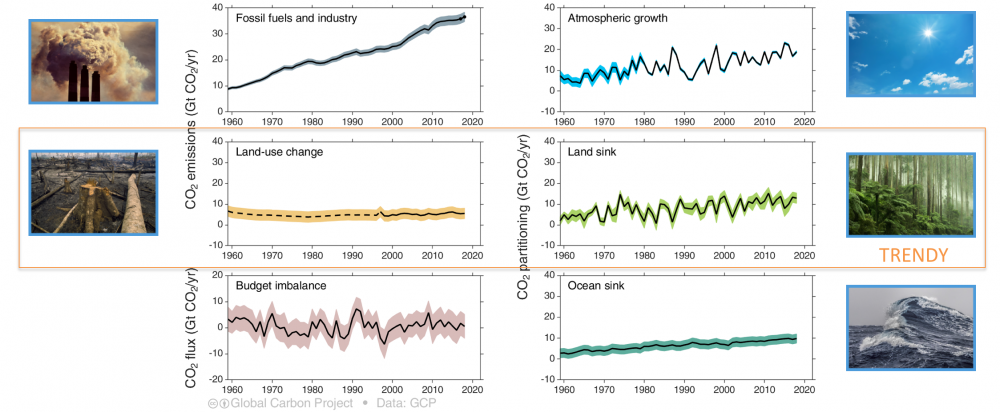If you are interested in joining this year, Trendy-v12, please let us know. The timeline is extremely challenging, usually groups have approx. one month to deliver model output after release of new forcing datasets and revised protocols, around early July each year. It is advised that new groups use an earlier Trendy protocol to get prepare in advance.
Let us know your intention and if you agree with the conditions (below) and would like to participate in the next round we’ll add you to the TRENDY-v12 email list.
We are happy to discuss this with you as we are happy to include new models.
There are however some “rules” for inclusion which we’d like to discuss with you first (summarized below):
– model has been described in a publication
– if based on an update of an existing DGVM in TRENDY – the c-cycle differences / advances need to be clear and significant.
– commitment to follow trendy protocol and timelines
– commitment to repeat this every year
– understanding that inclusion in GCB paper in ESSD is subject to model results meeting the 3 criteria.
-models outputs are made available (on request for the first 2 years, publicly available after 2 years),
-for ESSD paper we can only accept one author per model. More flexibility for other publications including TRENDY results.
Some background:
Each year (in ~July) the TRENDY group run our DGVMs (to the end of the previous year, i.e. 2022) in support of the Global Carbon Budget (GCB) annual assessment. TRENDY is lead jointly by Pierre Friedlingstein and Stephen Sitch. GCB is now led by Pierre Friedlingstein (Exeter), who took over from Corinne Le Quere, UEA, UK. One author per group is allowed in this subsequent GCB ESSD publication (global & regional – Northern, tropics, southern- NBP data from all models are then freely available). Other TRENDY data (e.g. all gridded data) is available for spin-off studies. The modelling teams have priority, but these data are also available to external collaborators on agreement (this is usually: if trendy data forms a significant part of a study [jointly decided by co-ordinators and main author] trendy modellers and co-ordinators should be offered co-authorship and engaged at an early stage; otherwise acknowledgement would suffice). We hold back TRENDY data from the last round, the earlier versions become freely available.
We are only looking for groups who are able to commit on the medium term to join the activity, i.e. we don’t want to include models for one or two years, as this will distort the ensemble mean results. On the medium term we want to see improvements in models, however we do not want groups to submit results from prototype model versions with limited or no evaluation (see below more details). We employ some criteria for inclusion of models (see protocol). If your model fails any of the tests, it will not be included (and no authorship offered). For GCB, each year we want to document the start-of-the-art in our understanding of the land carbon cycle.
For GCB we expect each modelling group to consistently submit their best model output with justification, and when there’s a change to provide proper justification and with continuity in mind (i.e. provide the best model and continue to do so until another model is proven to be better in a peer-reviewed journal),
For GCB rules, the more conservative approach:
1) Model version used to provide results has to be published with global simulations and some evaluation.
2) Each institution only submit results from its best model version, with one contact person who by default is the ESSD co-author.
3) If a model is used by several institutions, clear differences between models variants need to be documented.
4) If model variants give very similar results for global annual NBP, we will raise this issue and make a decision (either for current or for next year).
For TRENDY, rules are more relaxed:
1) Model version used to provide results has to be published with global simulations and some evaluation.
2) If several variants of a model are used, clear differences between models variants need to be documented.
3) Each institution can submit results from variants of a model as long as rules one and two above are fulfilled.
